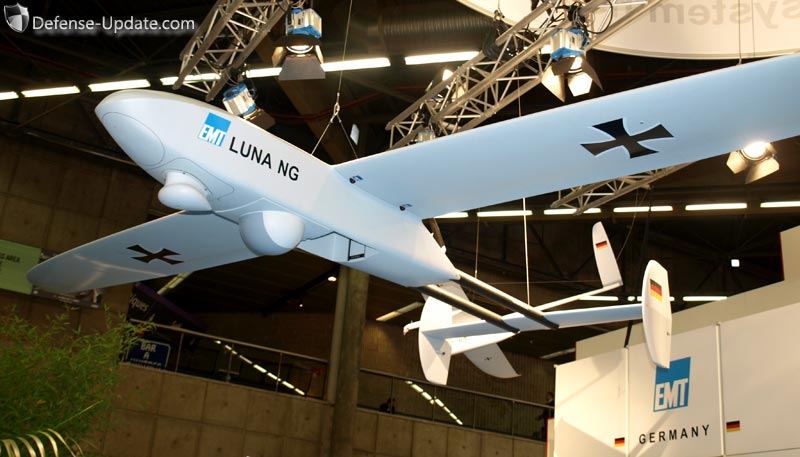
The German UAV developer EMT is displaying at Eurosatory the latest version of the Luna UAV, designated LUNA NG. The development of the new version began in 2010, based on lessons learned in operational service in the past six years in Afghanistan. The new design was funded by the company as an internal initiative, leading to the first prototype flight earlier this year. The new sign is aimed at what the company considers as an evolving requirement of the German Army for the follow-on mid- tier drone.

Unlike its predecessor using rounded body designed to wrap the EO payload, the new vehicle uses a more modular ‘boxed’ fuselage providing more volume for payload and avionics. The flat belly is cleared for multiple payloads, including the integral EO/IR turret, directional datalink antenna (at the front) and a new bay that can accommodate up to ten kilograms of additional payloads such as radar, mapping cameras etc. The tail pipe of the original Luna was replaced by a twin-boom formation, which seems lighter and more durable withstanding multiple landings. Luna NG weighs about 80 kilograms, twice the original Luna. It’ wingspan is five meters and mission endurance is 10-16 hours, depending on the payload weight. Luna NG is also designed to fly at a higher air speed of up to 150 km/h, enabling faster transit flight to the mission area and capability to take off and operate at high wind conditions.
EMT designed Luna NG for operation with all the existing equipment of the Luna system, except the luncher, which will have to be strengthened to launch the heavier weight at higher initial speed.
EMT is also preparing a small electrically powered drone to augment the small electrically powered Aladdin, operated by Army scout teams from their Fennek vehicles. The proposed drone, called MARS will carry two electrical motors and will have larger wing area to carry a gimbaled payload on a longer missions.

















